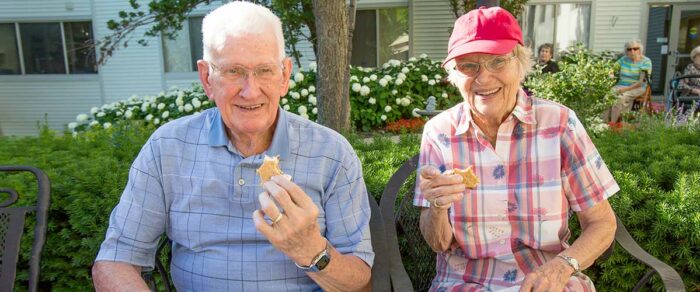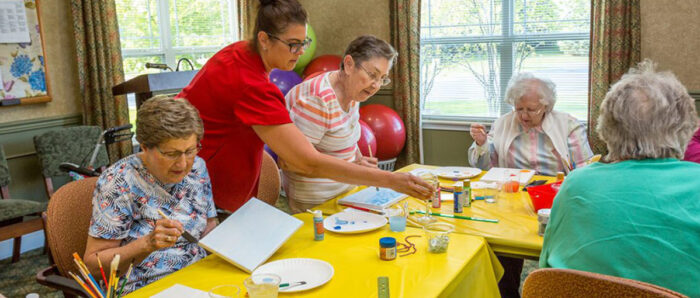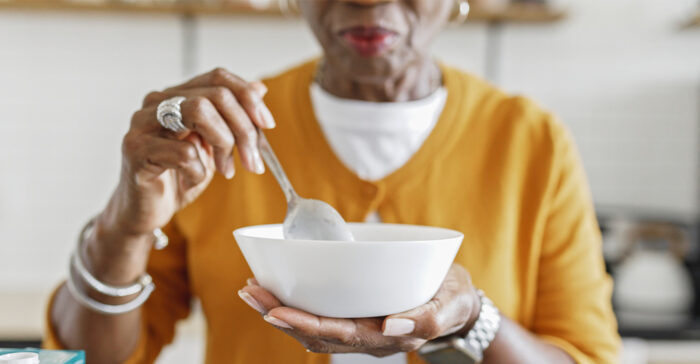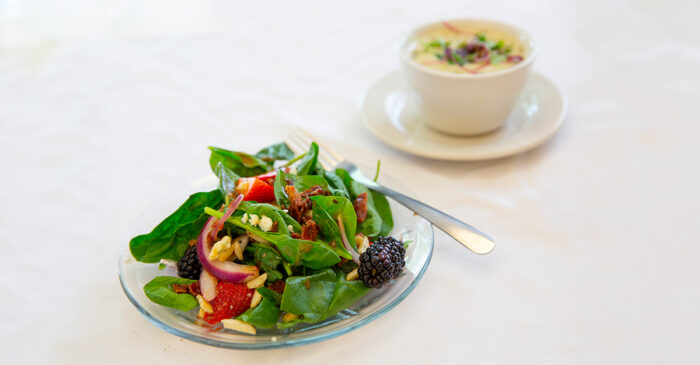Our bodies and activity levels change over time. This means that as you age, your diet should also be evaluated to keep your energy and physical health in tip-top shape. A proper diet can also support good nutrition and help maintain a healthy weight.
Following a nutritional plan allows your body to get the nutrients it needs to support a healthy diet which may prevent diseases like osteoporosis, high blood pressure, heart disease, type 2 diabetes and certain cancers.
How (And Why) Dietary Needs Change With Age
As you begin to enjoy your golden years, physiological changes can create risk for nutritional deficiencies that can affect your health. Some of these changes in senior dietary needs include:
- Reduced Caloric Needs: Older adults lose lean body mass (muscle and bones) and you may find that you aren’t as physically active as you once were. Due to these factors, caloric needs are not as high. This makes dietary choices extra important because there are fewer calories in the day to work with
- Increased Protein Needs: Less lean body mass can cause frailty, less efficient wound healing and a weaker immune system. In order to combat this as an older adult, you should consume larger amounts of high-quality protein to keep muscles as strong as possible.
- Decreased Bone Density: Aging causes bone density to decrease, and many older adults end up developing osteoporosis. To slow down any development of osteoporosis, you should consume increased vitamin D and calcium.
One easy tip to help consume enough calcium-rich foods and beverages is to make it a goal to eat (or drink) three low-fat dairy products a day. Calcium can also be found in real fruit juice and leafy, dark green vegetables. Vitamin D can be found in fatty fish like salmon.
- Decreased Absorption Of Vitamin B-12: Vitamin B-12 becomes harder to digest as you get older, which can cause decreased mental function. To help make sure you’re keeping your B-12 at the appropriate level, eat foods that are fortified with it, such as low-fat milk, yogurt, cheese, or beef, liver and chicken. Consuming B-12 makes it easier to digest, as opposed to taking B-12 as a pill, which is more difficult for the body to absorb.
- Increased Need for Potassium: In order to lower the risk of high blood pressure, consuming adequate amounts of potassium, along with limited salt intake, might help. It’s likely no surprise that fruits, vegetables, beans and low-fat dairy products are on the healthy list — as an added bonus, these foods are excellent sources of potassium.
Did you know? At StoryPoint, residents can follow a Sensible Sodium program, which provides lower sodium meal options for residents. As menus change daily, there are always multiple lower sodium meal options to choose from.
- Increased Need For Fiber: Fiber is essential for a healthy digestive system, and soluble fiber is especially key for maintaining healthy cholesterol levels. You can find fiber in fruits and vegetables, beans, lentils, nuts and seeds, oats, and whole grains
While there are numerous nutritional elements to consider as you age, planning your meals ahead of time and knowing how much of different food groups to consume can help. To get an idea of what should be on your plate each day, read below about appropriate serving sizes and portions for older adults.

Serving And Portion Sizes For Seniors
Consuming a variety of food groups will help maximize your nutritional input. The USDA’s Dietary Guidelines advise that adults 50 and older should aim to follow this guideline each day:
- Vegetables: 2 to 3 cups
- Fruits: 1.5 to 2 cups
- Grains: 5 to 8 ounces
- Dairy: 3 cups (fat-free or low-fat)
- Proteins: 5 to 6.5 ounces
- Oils: 5 to 7 teaspoons
Based on these guidelines, and on the physiological changes you might be experiencing as you age, focus on building a diet based on a variety of fresh vegetables and fruits, lean proteins, whole and fortified grains, and low-fat and non-fat dairy products. Foods that are high in added sugars (like cakes, fruit pies, muffins and donuts) should be limited to occasional treats.
Examples of foods that you might consider incorporating into your diet could be:
- Fruits such as pears, bananas, strawberries and blueberries
- Vegetables such as kale, spinach, broccoli, Brussels sprouts, bell peppers and carrots
- Proteins such as skinless chicken breast, lean ground beef or turkey, fish and beans
- Fats such as nuts, seeds, avocados and vegetable oils
- Dairy products such as low-fat milk, yogurt and cheese
- Grains such as whole wheat bread and pasta, brown rice, and whole-grain cereal
Related: Summertime Healthy Eating Tips For Seniors
Choosing The Right Foods On The Go
If you’re out to eat, you might find it more difficult to choose the right meal or snack. In that case, older adults can rely on a few reliable guidelines.
- Eat foods that give you lots of nutrients without a lot of calories
When thinking in terms of caloric intake, the decision between potato chips and kale chips is pretty straightforward. (Answer: The right choice is kale chips!)
2. Avoid empty calories
Think about those potato chips again. The nutritional information will probably tell you that there’s a lot of calories without much nutritional value. It’s best to avoid items like these that are considered to have empty calories. Other empty calorie food items include candy, baked desserts or breakfast sweets, soda, and alcohol.
3. Aim to pick foods that are low in cholesterol and fat
A quick glance at any label will clue you in to how many saturated and trans fats might be in a food item. If there’s no label, know that saturated fats are usually found in fatty animals (red meat, especially) and trans fats can be found in margarine and vegetable shortening.
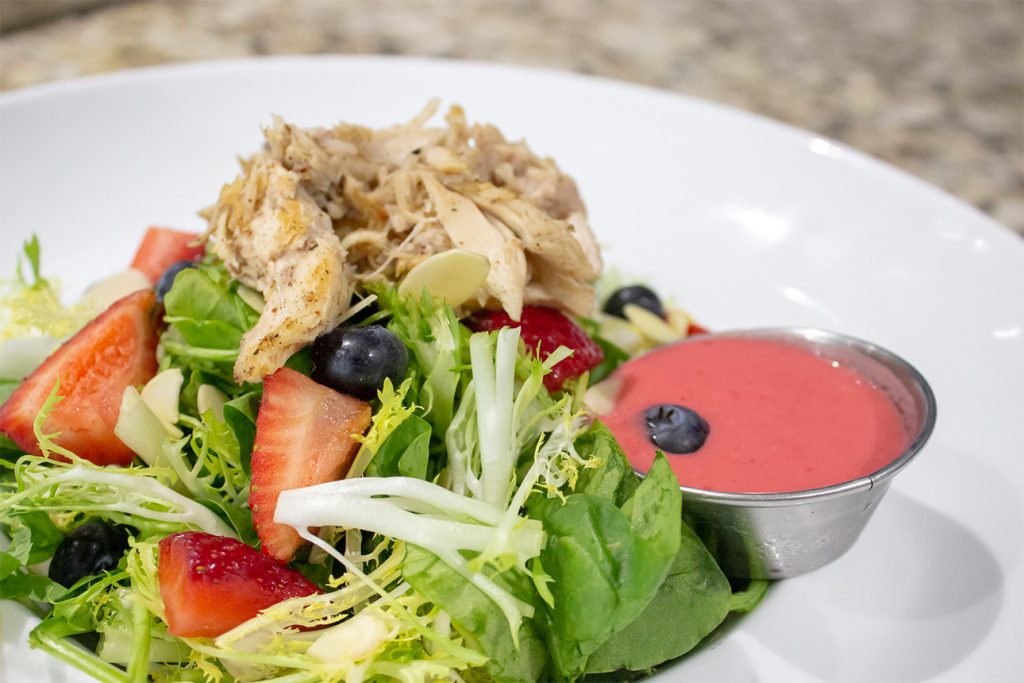
Don’t Forget Water Intake
Staying hydrated throughout the day is crucial in helping your body function properly at every stage of life. For proper hydration, aim to drink eight glasses of water per day. Seems like a hefty task? Increase your water intake by eating soup, water-rich foods (you guessed it — vegetables and fruits) and drinking juice.
Tip: Adding natural flavoring to your water (lemons, cucumbers, limes, etc.) can improve the flavor and encourage you to drink more.
Related: 5 Summer Safety Tips For Seniors
Meals And Nutrition At StoryPoint
At StoryPoint, every meal is crafted with our residents in mind. Not only are residents able to choose from multiple, customizable meal options each day, they also have access to our in-house registered dietitian and personal nutritional plans. To learn more about our dining options, contact StoryPoint at 1-855-407-8679.



